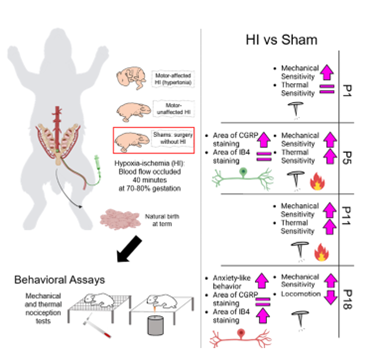You are here
Spinal Circuits in Cerebral Palsy
Speakers
Abstract
To improve therapeutics for cerebral palsy (CP), my lab is pursuing a better understanding of the impact of perinatal neural injuries on spinal circuits. Specifically, we are studying mechanisms of hyperreflexia, motor unit maturation and pain using a clinically relevant large animal model with a spastic / dystonic presentation after prenatal injury. New Zealand White rabbits exposed to 40 minutes of hypoxia-ischemia (HI) at 70-80% gestation. Rabbits exposed to prenatal HI have well documented brain injuries, hypertonia, hyperreflexia, and altered behavior relating to pain responsiveness. Consistent with people with CP, rabbits present with a wide variability in the severity of motor disturbances. We are finding that motor dysfunction is correlated to delayed maturation of motor units, including delayed loss of polyneuronal innervation of muscle fibers and expression of more immature myosin isoforms in muscle fibers. We are also investigating the cellular mechanisms of hyperreflexia, specifically examining reflex irradiation and its reduction using FDA-approved serotonergic drugs. My lab has also found that HI rabbits appear to have thermal and mechanical allodynia compared to sham controls, and this is accompanied by expansion of nociceptive afferent projections into the dorsal horn. This is particularly important, as the most frequent comorbidity of CP is pain, yet investigation into possible altered nociceptive neurotransmission has never been pursued until now. In summary, by focusing on changes in spinal circuits and how they correlate to outcome, we are finding novel targets for therapeutic development.

